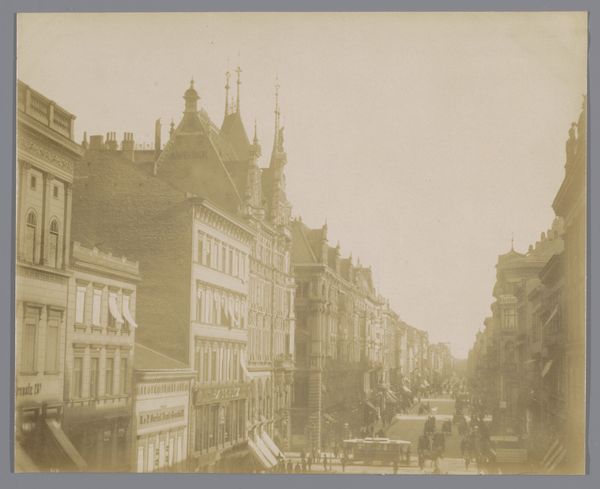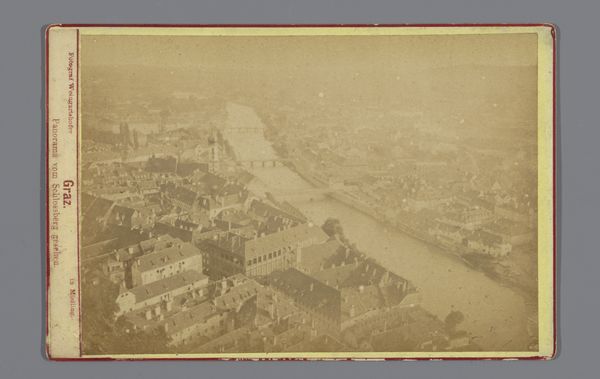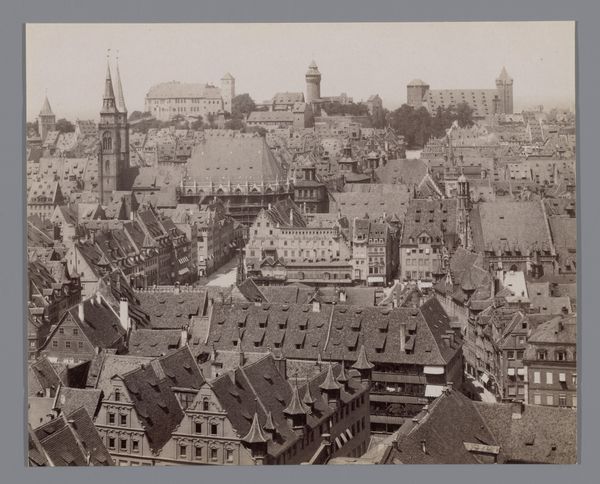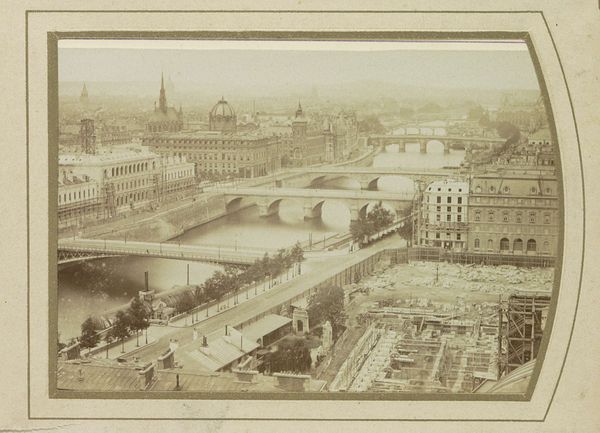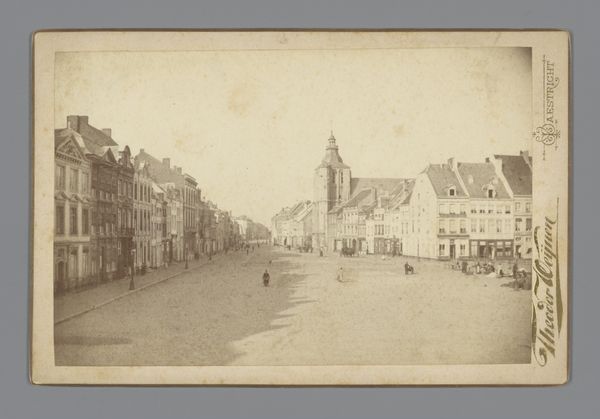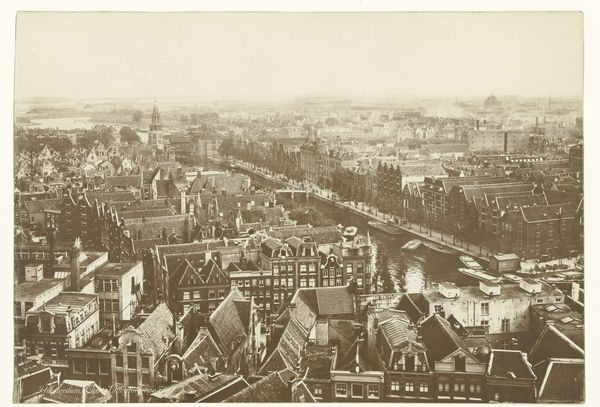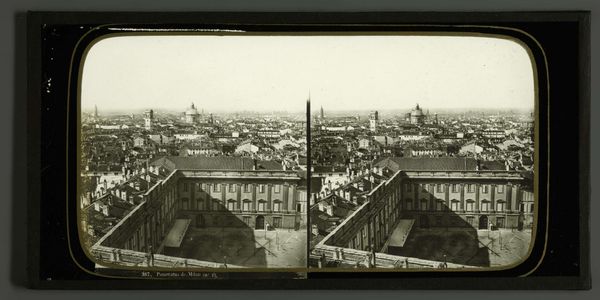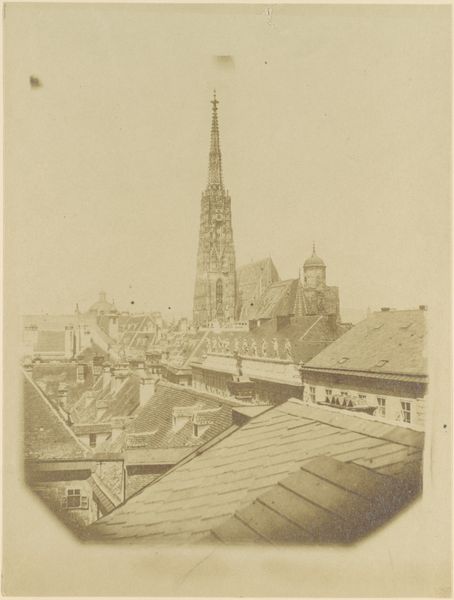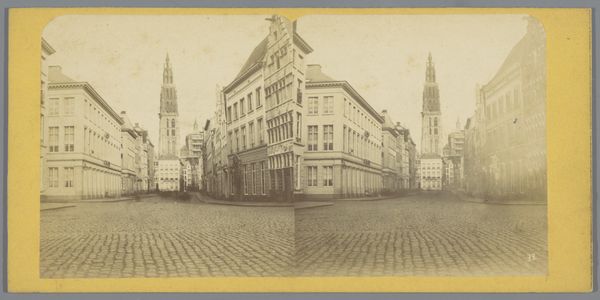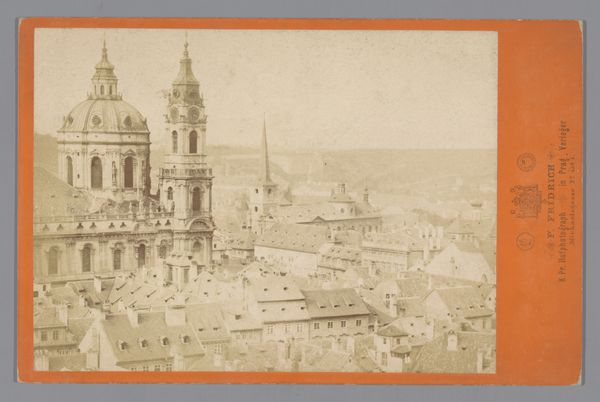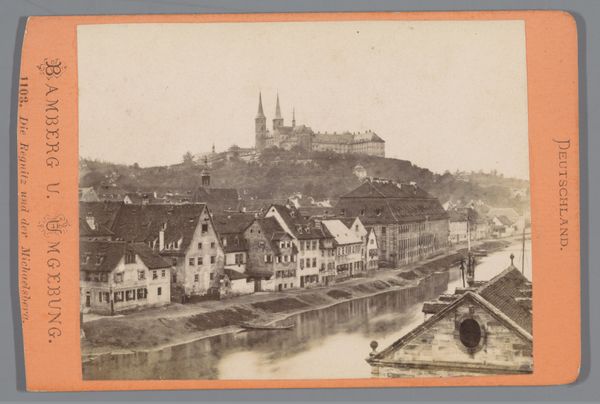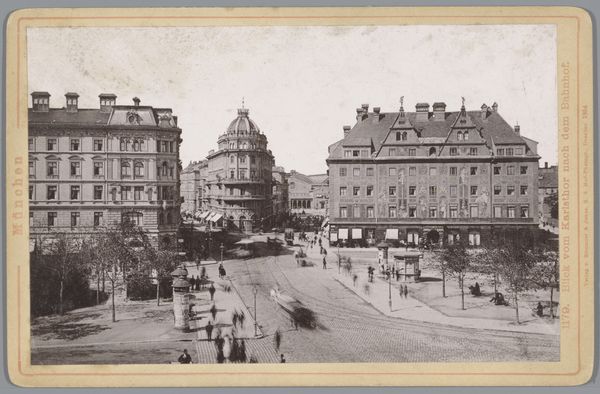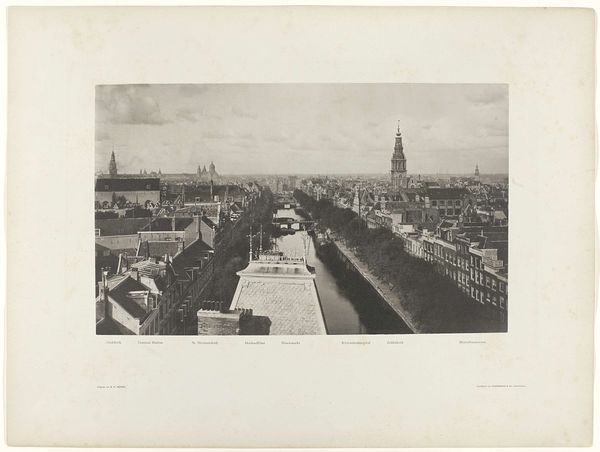
photography
#
photography
#
19th century
#
cityscape
#
realism
Dimensions: height 107 mm, width 166 mm
Copyright: Rijks Museum: Open Domain
Editor: This is Wilhelm Hoffmann's "Gezicht op de Altstadt van Dresden," a photograph from the 1850s. It gives me such a powerful feeling of witnessing history, like a portal to the past. What do you see in this photograph, and what stories does it tell from a historical perspective? Curator: For me, this image speaks volumes about the intersection of technological advancement and civic identity. Here we have early photography capturing Dresden in the mid-19th century, a moment of rapid industrial and urban change. What do you notice about how the photographer composes the image? Editor: I'm drawn to the high vantage point, almost as if the viewer is in a balloon, observing the entire city spread out before them. It creates a sense of order and control, while the soft sepia tones give it that timeless quality. Curator: Exactly. This elevated perspective, enabled by new technologies, gave viewers a god-like gaze over the city. Consider how photography at this time was becoming increasingly accessible and affordable, impacting the documentation of public life. Who was given agency, and whose history was told? Did such depictions primarily cater to elites, tourists, or a broader public? Editor: I hadn’t thought about the audience, that's an interesting angle! It feels like a statement, capturing this emerging modernity for, perhaps, those who felt most invested in its success. It also offers a kind of curated vision of civic pride. Curator: Precisely. This is an early example of photography as a powerful tool for shaping civic pride and projecting power. Photography wasn’t simply recording; it was actively participating in constructing a vision of Dresden. What considerations can we infer from its visual narrative? Editor: So, looking closer, I wonder if we can really see the conscious effort in displaying Dresden so meticulously and perhaps even selectively. This reminds me to consider the intent behind these seemingly objective historical documents. Curator: Absolutely. Now, consider this photographer’s choice in relation to broader political and artistic contexts of the time. Every artwork, including photographs, is embedded within power structures and belief systems that have consequences we still experience today. Editor: This has shifted my perception entirely! It's no longer just a beautiful view but also a piece loaded with cultural and political intentions. Thank you.
Comments
No comments
Be the first to comment and join the conversation on the ultimate creative platform.
